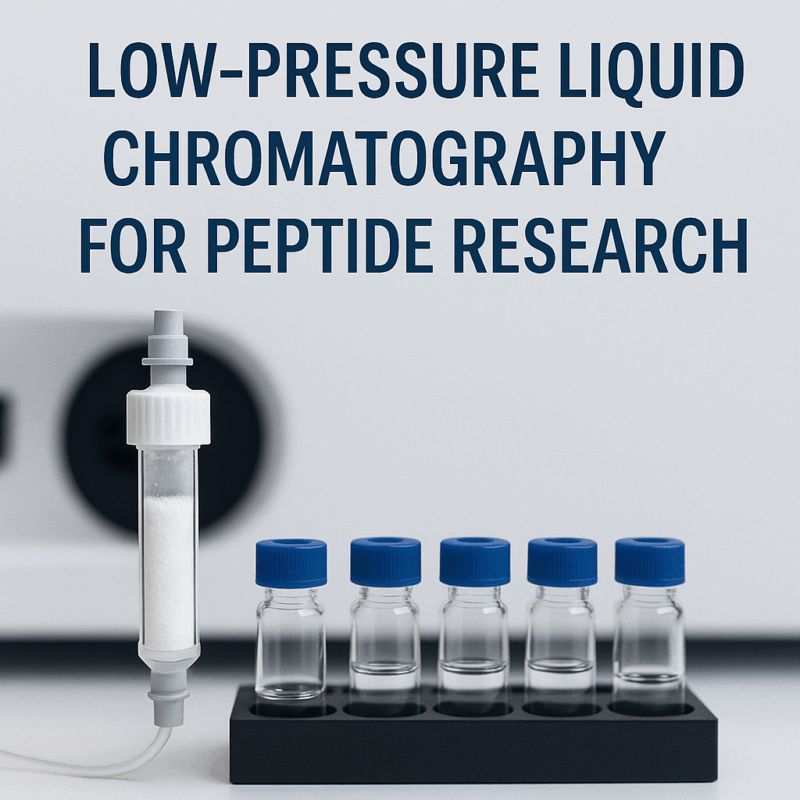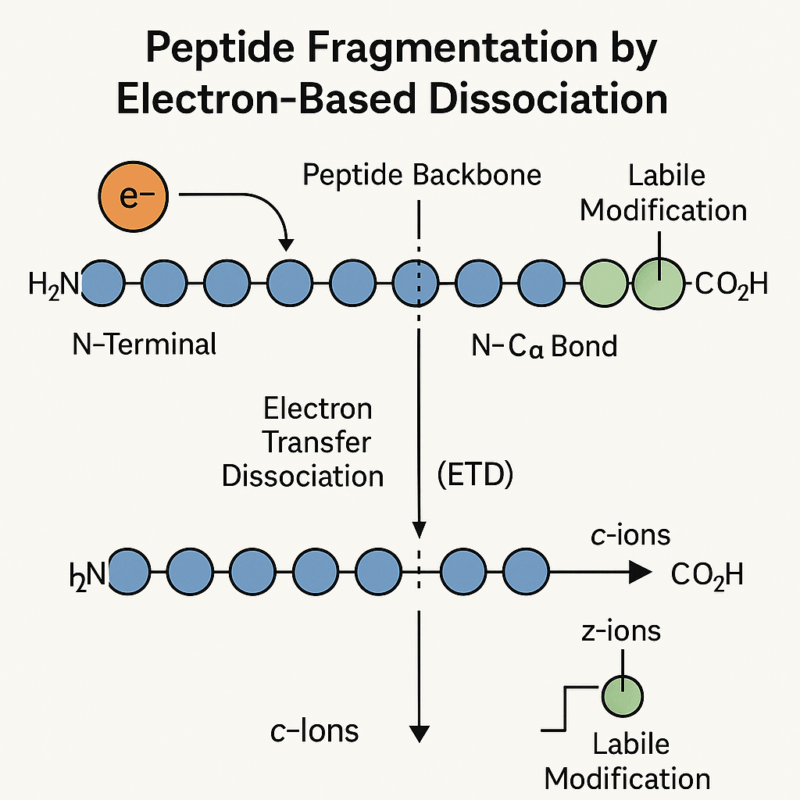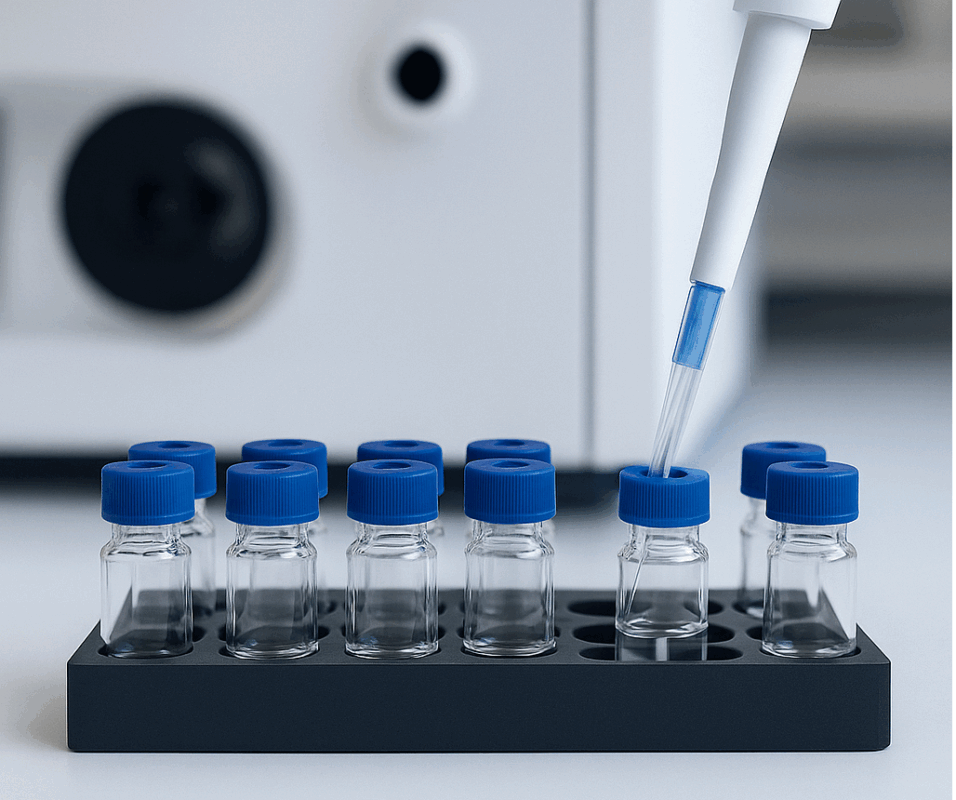Low-Pressure Liquid Chromatography for Peptide Research
Author: Dr. Numan S. Date: July 17, 2025
Academic labs also appreciate that LPLC allows collection of fractions for flexibility: one fraction can be subjected to MS/MS strategies like CID, another to ETD, or even to orthogonal analyses such as Edman sequencing or bioassays. The ability to collect and save peptide fractions means that researchers can perform replicate mass spectrometry analysis with different fragmentation modes (e.g. comparing CID vs ETD directly on the same sample) or use hybrid approaches. Indeed, modern proteomics often employs hybrid fragmentation workflows (such as sequential HCD and ETD on the same peptides) to maximize identification of PTMs and peptide sequence information [8]. LPLC fits well here as an upfront separation that produces the multiple samples needed for such comparisons. Additionally, because LPLC equipment is relatively affordable and user-friendly, it is common in teaching labs and smaller research facilities that may not have dedicated HPLC-MS instruments. Students can learn principles of analytical techniques and chromatography on LPLC setups before moving to more complex instrumentation.
Supporting techniques like electrophoresis or affinity steps are integrated as needed to address specific challenges (for example, removing closely related impurities or concentrating very dilute peptide solutions). The combination of these methods enables researchers to obtain peptides in pure, homogeneous form, which is essential for subsequent experiments or product development.
In industrial settings, LPLC is indispensable for peptide production and purification at scale. Biotechnology and pharmaceutical companies often need to produce peptide drugs or large peptide batches (for example, peptide hormones, analogs like GLP-1 agonists, or vaccine peptides) with high purity and yield. LPLC systems (often called process chromatography columns) are employed in multiple steps of these manufacturing protocols. A typical industrial peptide purification might start with a low-pressure capture step, such as an ion-exchange or capture resin that binds the crude peptide from a fermentation broth or synthesis mixture. Because these resins have large particle sizes, they can process very high volumes quickly and cheaply. One notable example is insulin (a peptide hormone ~6 kDa): almost every insulin manufacturing plant uses large low-pressure chromatography columns (often dynamically compressed) to purify insulin at different stages. “Industrial production and QC pipelines often involve 3rd party tested peptides—LPLC complements these by ensuring peaks, functional segments, and labels remain intact before analytical validation.
Optimizing LPLC for Peptide Resolution: What to Watch For
When using LPLC for peptide separation, certain considerations help maximize resolution and ensure a successful outcome. First, choice of stationary phase is critical. Different peptides may require different modes of chromatography. Ion-exchange LPLC is useful for separating peptides by charge (commonly used to enrich things like phosphopeptides on cation exchangers at low pH). Affinity LPLC can target specific peptide features (e.g. using immobilized metal affinity to grab phosphorylated peptides or lectin affinity to capture glycopeptides in glycoproteomics workflows). Size-exclusion (gel filtration) can fractionate peptides by length, which is helpful to remove very small degradation products or to isolate larger peptides from smaller ones [2].
Matching the chromatographic mode to the peptide property of interest will improve separation clarity. Second, particle size and column dimensions should be optimized. In LPLC, using very small particles is not feasible due to backpressure limits, but using a moderately smaller bead can improve resolution if the system can handle it. Conversely, very large columns with large beads can purify more material but may yield broader peaks (lower resolution). A compromise must be struck depending on whether the goal is analytical resolution or preparative scale. It’s noted that modern resins for medium-pressure chromatography come in various sizes; using a smaller bead for a second LPLC step (if needed) can sharpen separations while a larger bead in the first step keeps the process efficient and cost-effective [8].
Flow rate and gradient are also key parameters to watch: running too fast can reduce contact time and resolution, whereas running too slowly can cause diffusion and peak broadening. Practitioners often start with manufacturer guidelines for flow and then tweak to see how the peptide mapping outcome improves (for instance, slight gradient changes can sometimes resolve peptide variants that co-elute).
Is LPLC Right for Your Peptide Workflow?
Choosing between LPLC and other separation methods (like HPLC or even non-chromatographic approaches) depends on your lab’s needs, throughput goals, and budget. As a decision guide, consider the following criteria:
- Throughput and complexity: If you need to identify thousands of peptides in a complex sample (such as a whole proteome digest), high-pressure LC–MS/MS is generally the gold standard for its speed and resolution..
- Lab budget and equipment: LPLC shines in low-resource settings. If an HPLC or UHPLC system with MS detection is out of reach financially, LPLC can achieve many of the same separation tasks at lower cost (albeit at lower resolution).
- Desired outcome (analysis vs preparative): If your end goal is analytical (identifying what components are in your sample and in what quantity), HPLC or UHPLC coupled to detectors (UV, MS) offer higher resolution and faster run times – essentially, more analytical techniques firepower for component separation and quantitation.
- When to use LPLC vs HPLC (or both): Use LPLC when you need scalability, gentle handling, and cost-effective processing of peptides. This includes early purification steps in a synthetic peptide pipeline, large-scale isolations, or enrichment of modified peptides before analysis. Use HPLC (or UHPLC) when you need high resolution separation of very similar peptides (e.g. separating an oxidized vs reduced peptide variant), when speed is critical (short analysis times), or when you can directly couple to an MS for real-time detection.
In conclusion, LPLC is a powerful tool for peptide research, particularly when purification yield, sample integrity, and cost are top concerns. It is right for your workflow if those factors outweigh the need for ultra-high resolution. When deciding between LPLC vs. HPLC, consider the end-use of your peptides: if you need them in hand (intact and in significant quantity), LPLC is likely the right choice. If you need the most detailed separation for analytical characterization, HPLC or coupled LC-MS might be preferable. Often, the best outcomes in peptide research come from using both in sequence – leveraging LPLC for what it does best (bulk separation and gentle handling) and HPLC/MS for what it does best (fine resolution and detection). By understanding these differences and the specific needs of your project (be it peptide sequencing, PTM analysis, or production), you can make an informed decision and possibly integrate both approaches to maximize efficiency and data quality.



